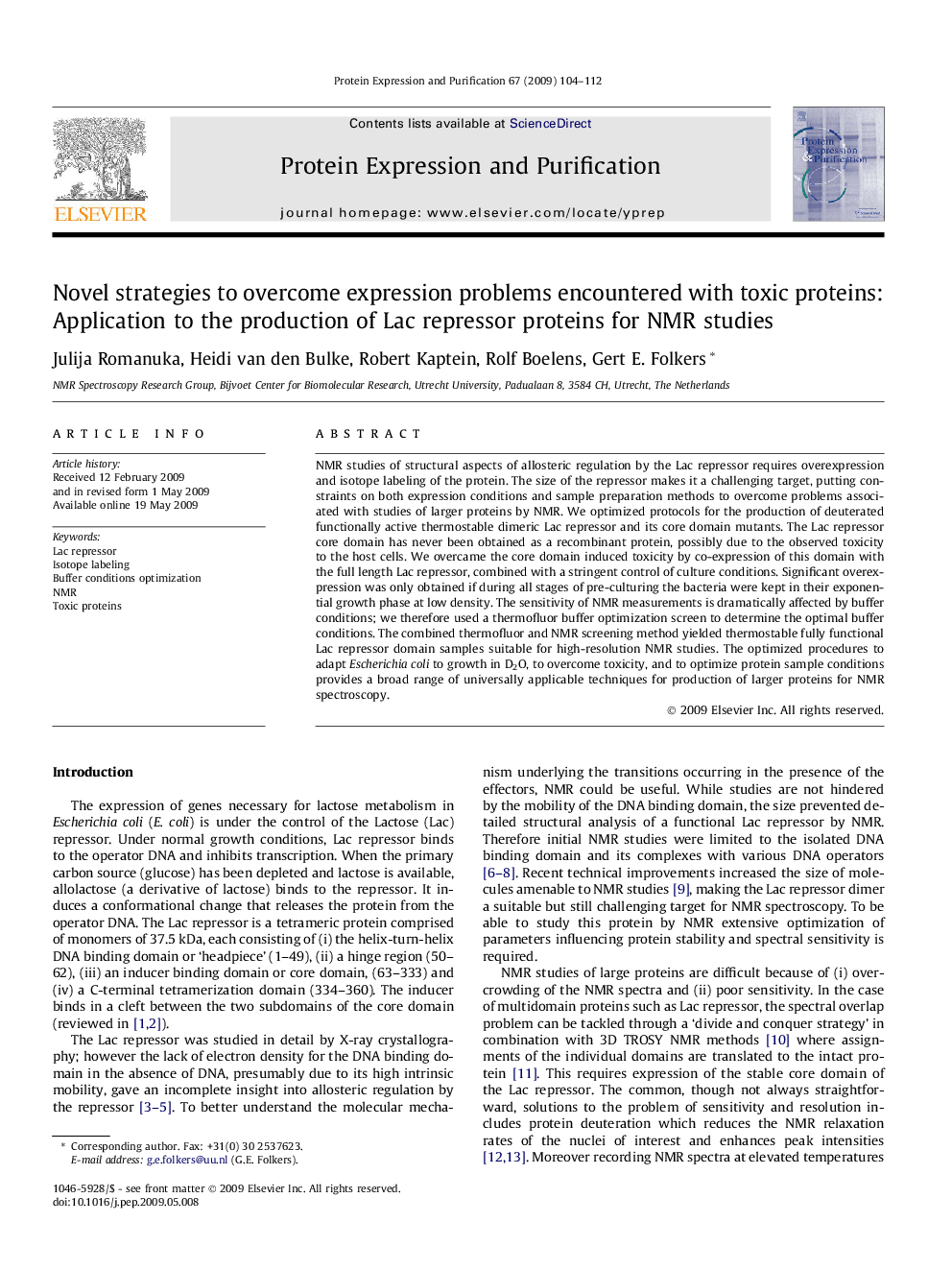| Article ID | Journal | Published Year | Pages | File Type |
|---|---|---|---|---|
| 2021395 | Protein Expression and Purification | 2009 | 9 Pages |
NMR studies of structural aspects of allosteric regulation by the Lac repressor requires overexpression and isotope labeling of the protein. The size of the repressor makes it a challenging target, putting constraints on both expression conditions and sample preparation methods to overcome problems associated with studies of larger proteins by NMR. We optimized protocols for the production of deuterated functionally active thermostable dimeric Lac repressor and its core domain mutants. The Lac repressor core domain has never been obtained as a recombinant protein, possibly due to the observed toxicity to the host cells. We overcame the core domain induced toxicity by co-expression of this domain with the full length Lac repressor, combined with a stringent control of culture conditions. Significant overexpression was only obtained if during all stages of pre-culturing the bacteria were kept in their exponential growth phase at low density. The sensitivity of NMR measurements is dramatically affected by buffer conditions; we therefore used a thermofluor buffer optimization screen to determine the optimal buffer conditions. The combined thermofluor and NMR screening method yielded thermostable fully functional Lac repressor domain samples suitable for high-resolution NMR studies. The optimized procedures to adapt Escherichia coli to growth in D2O, to overcome toxicity, and to optimize protein sample conditions provides a broad range of universally applicable techniques for production of larger proteins for NMR spectroscopy.
